Insulation Tips
How to Insulate Between Floors of a Double-storey House
Installing insulation throughout the home is the best way to improve energy efficiency, create a more comfortable indoor environment and save on your energy bills.One of the most overlooked places to insulate is between floors of a double storey home. Not only will mid-floor insulation give you all the thermal benefits described above, it’s the best way to control noise transfer between storeys too.Read on to find out how to insulate between floors, what the best products are for the job and ways to get started on your project.
Can I Insulate Between Floors of a House?
If you’re building or renovating a double or multi-storey house, it’s not only possible to insulate between the floors, it’s highly recommended that you do so.Insulating the mid-floor area (i.e. between the ceiling of the ground floor and the floor of the second storey) is a fairly straightforward process if the mid-floor cavity is exposed. It can become much trickier if the plastering has already been done. That’s why we recommend installing mid-floor insulation during the building and renovation phases.
Video – Insulation for Between Floors
How to Insulate Between Floors
Mid-floor insulation is typically installed from below when the ceiling cavity is exposed. The steps below explain how to insulate between floors, but it’s best to get expert advice for your situation before starting.
- Seal up any holes with an acoustic sealant. For example, holes for electric wires or plumbing.
- Insert the batts between the ceiling joists, ensuring a snug fit and making sure there are no gaps between the different batts. It’s important to buy the correct width batts to suit the distance between your ceiling joists for the best fit.
- Consider installing resilient channels and then a plaster to help combat impact noise from above. The resilient channel will ensure the plaster does not touch the ceiling joists, minimising the amount of vibrations that pass through.
Insulation Between Your Garage and the Room Above
If your garage is located underneath a living room or bedroom, it’s worth installing acoustic insulation to prevent unwanted noise transfer, for example car noises. Insulating your garage will also improve temperature regulation inside your home, preventing warm air from escaping during winter and keeping the hot air out during summer.
Insulation for a Liveable Attic Space
If you are converting your attic into a liveable space, attic insulation between the attic floor joists will be very important to help control noise and heat transfer.Read our guide on how to install insulation in your attic.
Is It Necessary to Insulate Between Floors?
The main reasons to install insulation between floors is to reduce the noise transfer between the upstairs and downstairs spaces and to improve temperature regulation throughout the home.
Acoustic Benefits
In a double storey home, the noise from things like footsteps, music and appliances can travel between floors, creating disturbances. The best way to solve this issue is with acoustic insulation (also called sound insulation). Acoustic insulation between two levels of a house can help to create a quieter home and contain sound to its designated area. Acoustic batts are thicker and more dense than traditional thermal insulation batts, making them particularly effective at reducing the transfer of unwanted sounds. They also have all the benefits of thermal insulation too.
Thermal Benefits
Heat naturally travels from places of high heat energy to places of low heat energy, making it hard to keep your home cool in summer and warm in winter. The best way to prevent unwanted heat loss and gain is to use insulation throughout the home, including between floors.Mid floor insulation can reduce heat loss and gain between the different levels of your home, creating climate zones. This means your indoor heating or cooling appliances will work more effectively and use less electricity to maintain a comfortable temperature in your living space.Check out this video for more reasons why insulating between floors is a good idea.
When Is the Best Time to Install Mid-floor Insulation?
The best time to install mid-floor insulation is during the building stage or during major renovations when there is access to the ceiling cavity. Once the plaster is put in place, it is much more tricky and expensive to re-open the cavity to install the insulation.If you are building a new home or thinking about renovating an older home, now is the best time to invest in mid-floor insulation.
What Insulation Should You Use Between Floors?
At Pricewise Insulation, we recommend installing acoustic insulation between floors or ceiling insulation batts that are rated R4.0 or higher. Insulation batts are a type of bulk insulation which contain millions of tiny air pockets in their structure. These air pockets help break up the path of heat to slow down the rate of heat transfer.The most common materials for insulation batts are glasswool, polyester and rockwool. The R Value of the product indicates how effective it is at preventing heat loss and gain.
How Can I Improve Soundproofing Between Floors?
Installing acoustic batts in the walls and between floors is the most effective way to improve sound insulation between rooms. Other tactics include installing underlayment for flooring, sealing up cracks with caulking and hanging acoustic foam panels.Before deciding what method to use, it’s important to understand the nature of noise.
- Some noises are airborne, meaning they travel through the air. This includes things like voices and music. Improving acoustic absorption with acoustic batts is a good solution for unwanted airborne noise, as well as sealing up air leaks.
- Impact noise travels through solid materials, for example footsteps on timber floors and vibrations from appliances. Insulating between floors and using soft materials such as carpets and rugs is a good way to reduce impact noise.
Best Acoustic Insulation for Between FloorsSome of our most popular mid-floor insulation products include:
- R4.0HD Knauf Earthwool SoundShield Insulation
- R3.1 Bradford SoundScreen Insulation
- R3.1 Pink SoundBreak Insulation
Buy the Best Products for Your Insulation Project Today
If you’re planning on insulating between floors, check out our range of quality mid-floor insulation products. Use the insulation calculators on each product page to help you decide how much you need and place an order with us today.For free expert advice about choosing the right product for your project, get in touch with our team on 1300 729 639.

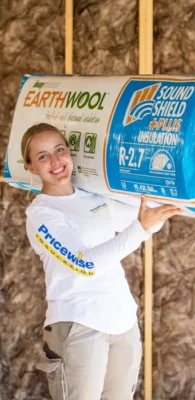
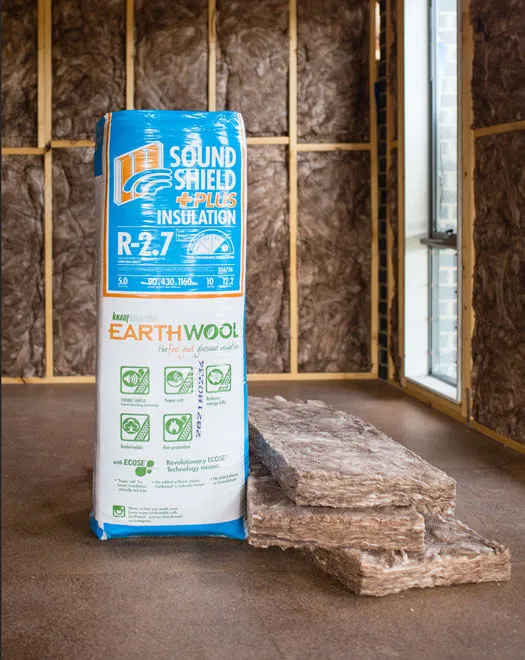
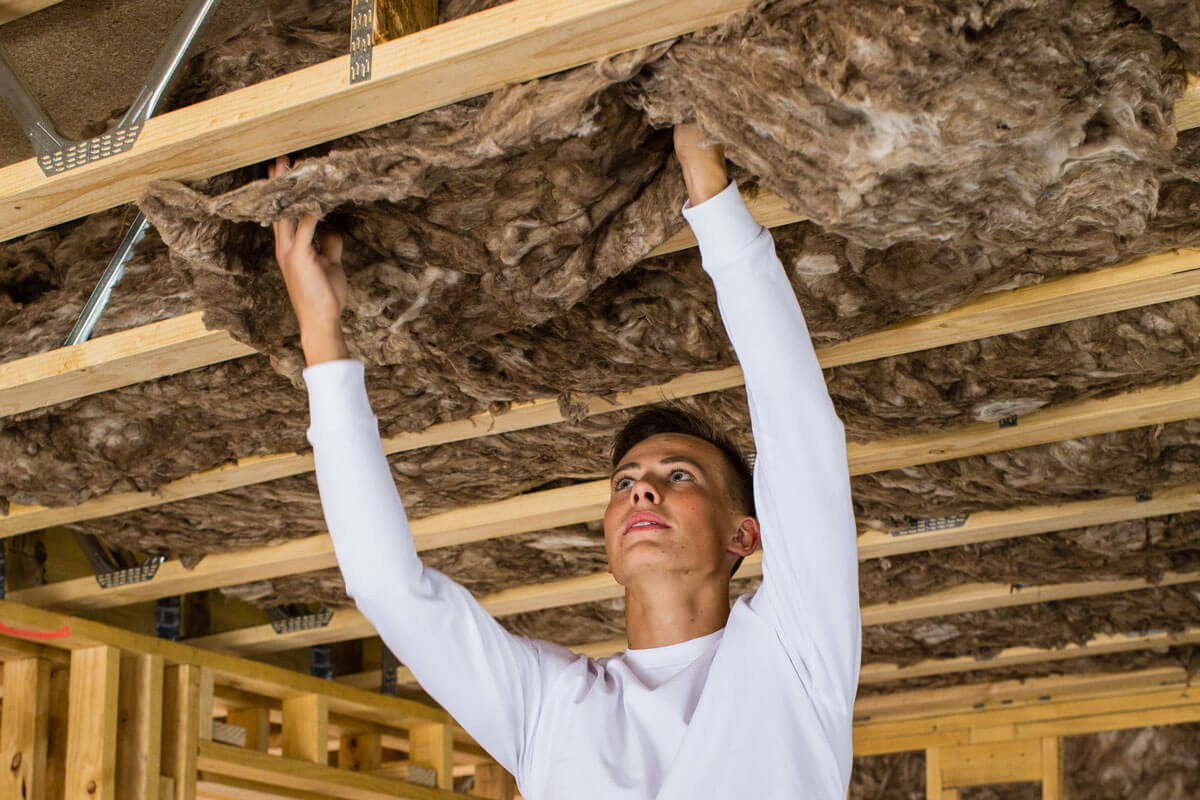
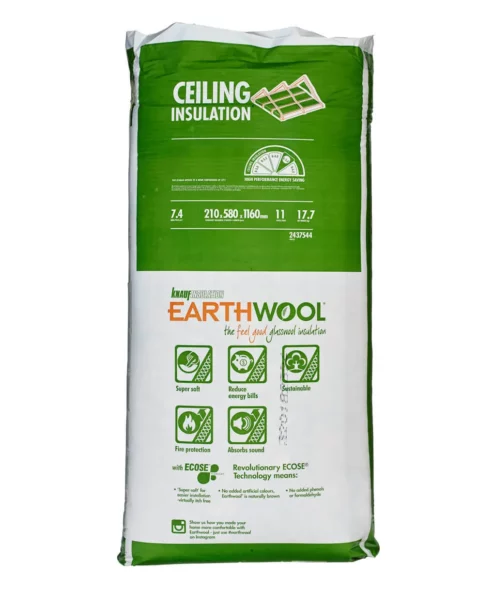
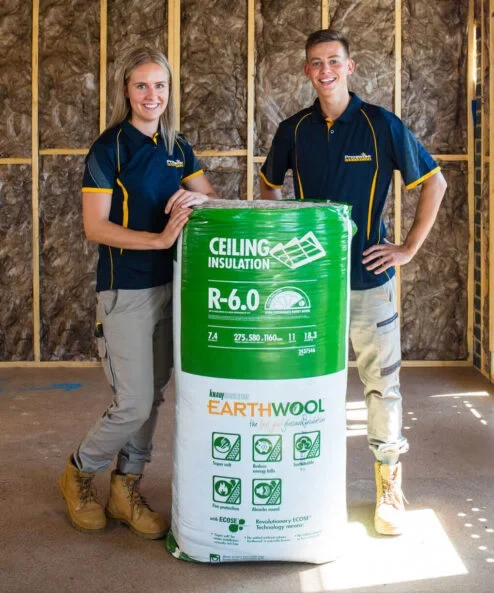
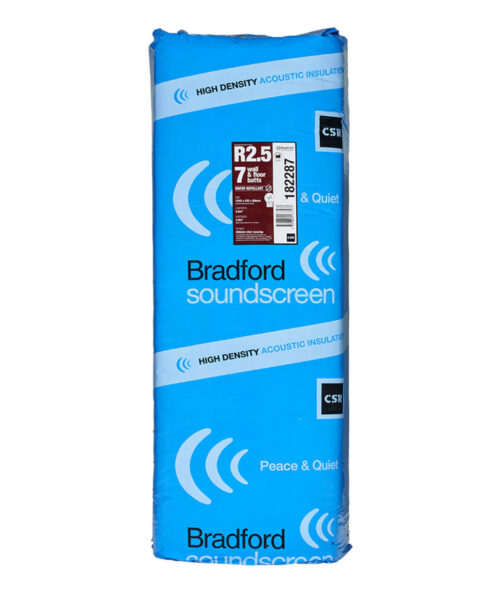
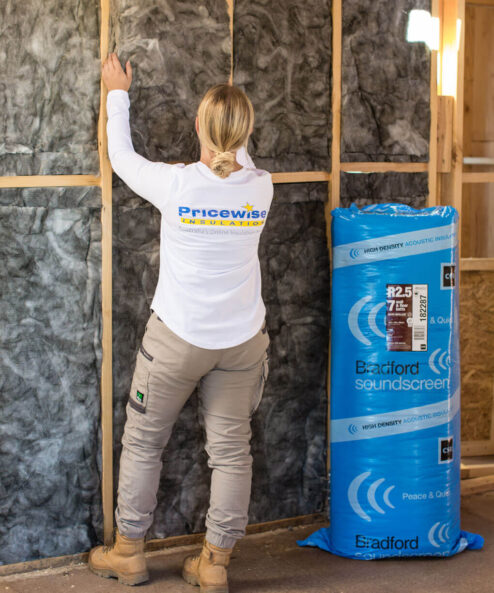
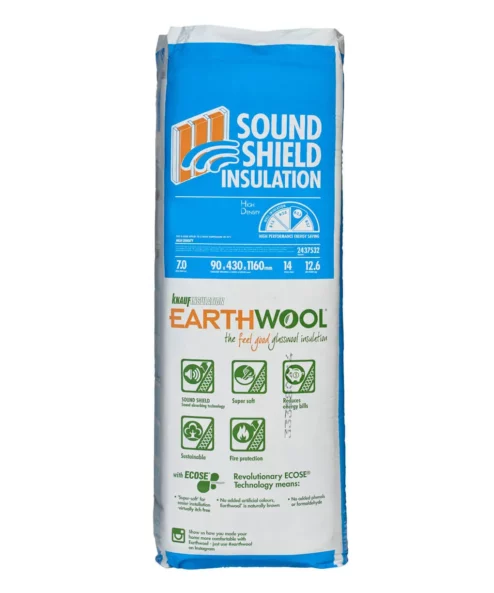
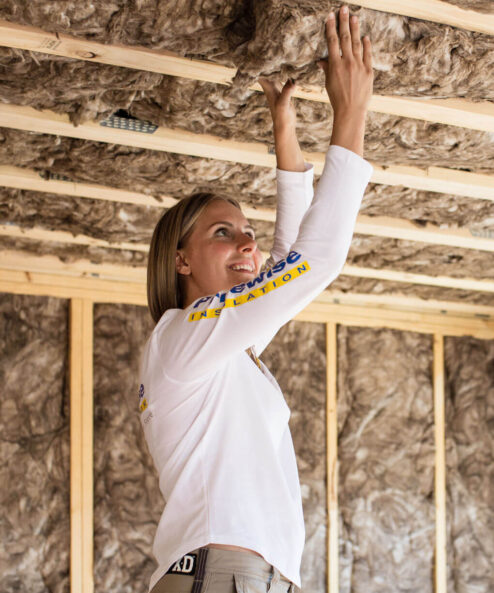

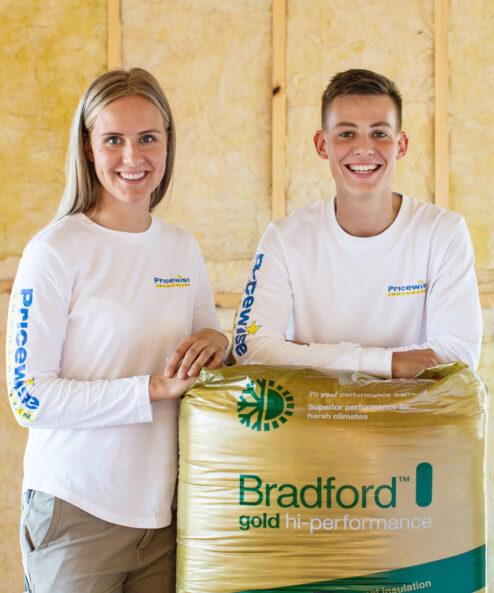
I am building 2 side beside homes in Beaumaris.
I would like your advise on what is best for my insulation needs.
Should I insulate between ground floor and first floor?
My kitchen, living room and main bedroom are upstairs.
I look forward to your advice.
Regards,
Graeme Todd
Hi Graeme,
Thank you for your enquiry. We definitely recommend insulating between floors of your double storey houses in Beaumaris. The products that we recommend for between floors include R2.5 acoustic wall insulation or R4.0, R5.0 or R6.0 ceiling insulation. We also recommend insulating the internal walls of both levels, as this helps to reduce noise and create climate zones within the home. We’ve got a video with more information about how this works – https://www.youtube.com/watch?v=-qyVYCpNMF4.
Please don’t hesitate to contact us on 1300 729 639 if you have any more questions.
Cheers!
Pricewise Insulation
What is the most efficient & cost effective method of insulating / soundproofing between floors in a pre existing double story home?
Hi Chris,
Installing insulation between floors in an existing double storey home is always going to be challenging. The two main options which you have are to remove the plaster and install R4.0 Knauf Earthwool Sound Shield Insulation or to lower the ceiling and install the same product. Neither of these options cheap unfortunately, which is why we encourage our customers who are building a new home to invest in mid-floor insulation before the plaster is installed. We hope this helps!
Cheers!
Pricewise Insulation
My home was built in 1905. We are remodeling and I’m wondering if we should insulate between the first and second story? The second story houses my children’s sleeping quarters and one washroom. Thank you in advance for any help you can offer.
Hello Jennifer,
If you are removing the existing plasterboard, then this would be a good time to install insulation between floors. We recommend installing R4.0 Knauf Earthwool Midfloor Insulation – it’s a new acoustic product that will help to reduce the transfer of noise between levels. Feel free to give our team a call on 1300 729 639 if you have any further questions.
Can you blow insulation into the joists is you have access to the ends. Mostly looking to reduce noise.
Hi Eric,
Blow-in insulation works in open roof spaces as a thermal solution, but it is unlikely to be very effective between floors. Most acoustic products such as Knauf Earthwool Sound Shield Insulation are very dense, which is what helps them to reduce sound transfer. From what we’ve seen, blow-in insulation is generally light and fluffy and therefore less effective in reducing sound. Furthermore, it would be difficult to blow into a mid-floor area where there are lots of wooden joists in the way. Your best option would probably be to remove the plaster, insulate between floors and plaster up again. We understand that this is not a cheap solution, which is why it’s so important that people insulate their homes properly during the initial building phase. Feel free to give our team a call on 1300 729 639 if you would like to clarify this further.
Cheers, Pricewise Insulation
What about lifting floor boards
Hi Shirley,
Thank you for your question. If you are renovating your home and lifting up old wooden floors to replace them, then you could certainly look at insulating below the floorboards. Just give our team a call on 1300 729 639 to discuss which product would be best for your application.
Cheers, Pricewise Insulation
We are building a 2nd story (bedrooms & rumpus for kids) and we have insulation (R2.5) between the ground floor ceiling and floor of the 2nd floor. Ground floor master is under the rumpus room. We are putting in floorboards upstairs. Will this be enough noise protection or should we also be considering an underlay under the boards to reduce noise?
Hi Kate,
Thank you for your question. It really depends where you are at in the building process and whether the R2.5 insulation batts that have been installed are acoustic batts. If they are R2.5 thermal ceiling batts then they won’t do much in terms of reducing sound transfer. If they are R2.5 acoustic batts then they will certainly help to reduce noise. However, considering that the rumpus is above the master bedroom you would be best off with a better product like R4.0HD Earthwool Acoustic Mid-Floor Insulation (this is a new product). It sounds like the R2.5 batts are already installed, in which case you could look at adding another layer of insulation batts to improve the acoustics. Please give our team a call on 1300 729 639 and they would be happy to help.
Cheers!
we have existing double story house. We have master bedroom and below is the family room. we are considering to replace carpet in the master bedroom. Is it possible to install acoustic insulation to avoid noise between the floor. Not looking at entire upstairs. Just the bedroom as it covers entire family room downstairs.
Hi Kosha,
Thank you for your question. If you are removing the floor in the process, then it should be possible to install acoustic insulation between levels. The product that we recommend for between floors is the R4.0 HD Knauf Earthwool Sound Shield Insulation. Feel free to give our team a call on 1300 729 639 if you have any more questions.
Cheers!
I’m installing insulation in my heated basement ceiling family room. The heating pipes run through that ceiling. The insulation will be above the pipes. How should I install the insulation? With barrier side up or down?
Hi Mario,
What country are you based in? If you don’t live in Australia then we would suggest checking the local codes in the country where you live. If you live in Australia, then please give our technical team a call on 1300 729 639.
Cheers!
We have an raked roof with exposed beams. We don’t want to lose this feature but will need to insulate between floors. It is possible, if we were renovating the second story to add insulation as part of those renovations? For example perhaps extending the height of the ceiling on the second story a little to account for the insulation?
Hi Christa,
Thank you for your question. Could you please a photo of your plans to sales@pricewiseinsulation.com.au? This will allow our technical team to assess the best way to insulate your home without losing the feature of raked ceilings.
Cheers!
Hi
Apart from airborne noise, what is the best way to reduce contact noise between floors. For example, kids jumping up and down on the first floor.
Hi Haidar,
Thanks for your question! If you are building a new home then we recommend installing the R4.0HD Knauf Earthwool Acoustic Mid-Floor Insulation Batts between floors. This is a thick, dense product that will help to reduce the noise of children plying upstairs. We also recommend insulating the internal walls with R2.5HD Knauf Earthwool Sound Shield Insulation, as this will also help to reduce the transfer of noise within the home. If you are living in an existing home, then your best option would be to talk to one of our insulation specialists. Feel free to give our team a call on 1300 729 639.
Cheers!
We built a double story house in Victoria,I do not believe there is insulation between levels,we used a well know builder,with a new build should it be insulated.Thanks Mark.
Hi Mark,
That’s a really good question. Most new homes built by the volume builders (and also smaller builders for that matter) do not have insulation between floors as it is generally not needed to meet the 6-star energy rating requirements. However, we highly recommend anyone who is building a new home to consider installing midfloor insulation because it cannot be retrofitted later without removing the plasterboard of the ground floor ceiling.
Cheers!
Hello, Looking at adding insulation above my garage in my 2 story home. Is it worthwhile insulating the garage ceiling where there is a bathroom above it or just the bedroom areas?
Hi Lyn,
Thank you for your question. Usually this is a requirement of the energy report to insulate any part of the garage ceiling that is below a living area (such as bedrooms or bathrooms). The aim is to create a sealed envelope of insulation around the home – a process which involves insulating the walls, ceilings and floor areas. In the case of a garage, the walls adjoining the house and the ceiling areas below the upper floor levels will need to be insulated. You could go ahead and insulate the rest of the garage ceiling too if you like. Feel free to contact us on 1300 729 639 if you have any further questions.
Cheers!
Hi,
We have recently taken ownership of a double story house and the Insulation Certificate states that R5.0 for Ceilings, R2.5 for Walls and Midfloor was installed. I had my doubts the internal walls were insulated and checked myself. No insulation was found unlike the external walls.
Is it a requirement to insulate the internal walls to meet the 6-star energy rating requirement? Or is is limited to only the external walls?
Thank you
Hi Anthony,
Thanks for your question. Your description sounds pretty typical of a new house these days.
Most energy reports only require insulation in the external walls of the house, including the walls between the house and garage. Around half the energy reports we review also require insulation for the internal walls around the wet rooms. This may include the bathrooms and/or laundry.
Midfloor insulation is usually only required for above the garage when there is a first floor overhang. This is an important part of creating a thermal envelope around the house.
We try and educate our customers about the importance of internal wall insulation for acoustic and thermal purposes, as it’s something that’s easily overlooked in the building process.
Cheers,
Christa
Hi,
I was wondering what strapping you use to hold up the insulation in the ceiling?
Thank you
Hi Carl,
Thanks for your question. We use a polyweave insulation strapping for our installs. You can purchase it online here: https://pricewiseinsulation.com.au/product/polyweave-insulation-strapping/
Cheers,
Christa
i have acoustic batts installed between the floor on house that im currently building
there was a leak from bathroom upstairs and it leaked through the ceiling downstairs for more than 3 days and affected on a large area downstairs with water.
construction manager says that there is no sign of damage on the plaster so its all good.
my concern is the insulation between the floor…
as i research whether its okay or still be the same quality once the insulation get wet and dry, it is advised to be removed and replaced.. but my builder has other opinion.
please advise what your opinion regarding wet damaged insulation between the ceiling.
Hi Yvonne,
Thanks for your comment. Do you know what type of insulation batts were installed between the floors? Glasswool insulation no longer works effectively after it has been soaked with water. If any part of a glasswool batt has become wet, then it should be cut off and replaced with new insulation batts.
Feel free to give our team a call on 1300 729 639 if you have any further questions.
Cheers,
Christa
Hi,
I bought a double story house with the ground level already built in as a granny flat. The floors up upstairs are wooden, and it seems the previous never bothered to insulate midfloor when they had the downstairs ceilings installed. Is it possible to add insulation by removing and replacing just a portion of the floorboards upstairs (living room directly above the bedroom)? I figured this would probably be easier and cheaper than having the ceiling redone downstairs?
Hi Amimee,
Thanks for reaching out!
Removing the flooring and installing insulation between the joists is certainly an option, and will help reduce sound transmission between the two dwellings. If noise from foot traffic is your main concern, I would recommend installing a sound-absorbing rubber strip to the top of the joists, before relaying the floors. This will help reduce the transmission of structure-borne noise.
Regards,
Felicity
For a home office, soundproofing is a game-changer. You can focus better, participate in virtual meetings without interruptions, and improve productivity.
Hi, I currently live in a split level townhouse build in 2000, and each floor seems to have various temps like during summer it gets very hot upstair than down, and winter it can become cold upstair, even when awake. Are there any easy ways to fix this kind of insulation because 4 years ago, after burst pipe our handyman also add some insulation through the basement water pipe ceilings by wrapping? Or it requires spray foam insulation? I appreciate for any answers given.
Thanks,
Xian
Hi Xian,
Thanks for reaching out! There are a few potential reasons for the temperature differences, like insufficient insulation, window orientation, and the number/size of windows. To address this, ensuring proper insulation for floors, walls, and ceilings is key. You might also consider shading or window tinting for areas that get the most sun, which will prevent excess heat during summer.
When it comes to insulation, you’ve got a few options; spray foam, blow-in glasswool and glasswool insulation batts.
Feel free to contact us if you’d like to discuss these options and find the perfect fit for your space. Please call 1300 729 639 or email sales@pricewise.com.au.
Regards,
Felicity
I am in a house that is being renovated, they are adding insulation to the 1st floor ceiling. The concern is noise from the second floor. Is
How effective at noise reduction will it be if they do the sections between the ceiling runners with a thin blue/pink sheet installation stapled to the underside of the floor above, then leave a space and insert the fuzzy rolled insulation to the bottom of the runners nearest where the ceiling panel will be attached? The empty space size is equal to the thickness of the fuzzy pink insulation that the are inserting below that area.
Wouldn’t that cause more noise, or no difference?
Hi Laura,
Thank you so much for reaching out! While I don’t have the specific details on the blue/pink insulation mentioned, I can assure you that opting for fiber insulation like glasswool or polyester is a cost-effective solution for minimising sound transfer between rooms and floors. Having space between the layers of insulation poses no issues.
If you have any more questions or if there’s anything else we can help you with, please don’t hesitate to contact us on 1300 729 639.
Warm regards,
Felicity